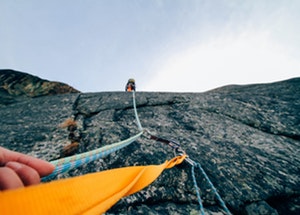How to Create an Environment that Supports You
By Jalene Case
The environment we build for ourselves—both externally and internally—influences how we show up and engage in our lives. Look around you. As you take in your surroundings, how do you feel? That feeling will follow you into whatever you’re doing next.
From 2015 to 2017, my husband and I traveled on our motorcycles, mostly in Latin America. My ability to control the surroundings changed dramatically and yet, the external world still influenced how I felt inside. For example, when we stayed in a place that felt good to me, I was inspired to write a blog post or make a video call to friends at home. When I found a private place to write in my journal, I could process the myriad of travel experiences.
Now I have more control over my surroundings. I decide how I want those spaces to look externally so they rev up my internal desires, goals, and visions.
So how do your create your own supportive environment? Here’s an outline and some questions to consider:
External Environment
Workspace. What does your dream workspace look like? Is it starkly minimalistic or wildly chaotic? Whichever way you choose, use an organization system that fits your style to increase productivity and decrease frustration. Give yourself permission to design the best space for you.
Storage Spaces (computers, bags, vehicles, etc). We can easily fall into the trap of storing too much “just in case” we need it and end up lugging around or being surrounded by a lot of unneeded clutter. What would serve you best to have nearby? How can you access it quicker? What can you let go?
People. The people we surround ourselves with establish our “norm.” In other words, if most the people you hang out with don’t exercise, you probably won’t exercise either. If most the people surrounding you are always learning, you most likely will also.
Malcolm Gladwell says, “The values of the world we inhabit and the people we surround ourselves with have a profound effect on who we are.”
Places. Where do you spend time outside your work and home? Are those places supporting you? For example, trying to eat healthy and yet going to fast food places is incongruent. Trying to meet people from the business community and joining your local Chamber of Commerce is supportive.
Internal Environment
Emotional. Our emotions drive us even though we’re usually not aware of it. Whether we rank high on the Emotional Intelligence (EQ) scale or we’re a bit out of touch with our emotions, we can all benefit by improving in this area.
The foundation of EQ is self-awareness. To grow that skill, try this:
- Ask yourself three times a day, “How am I feeling?” Set an alarm on your phone and when it goes off, internally ask yourself the question and answer with a word that best describes your feeling. This will grow your self-awareness and your vocabulary for describing emotions.
Physical. How does your body feel? Take a scan of your body and consider what you might do to help it feel better.
I had a big ah-ha when my husband and I were out traveling on our motorcycles. I knew it was important to sit-up straight when I was riding but I wasn’t doing it. As a result, I had to contend with an injury for several months. The ah-ha was that in order to sit-up straight, I had to strengthen my stomach muscles. That meant I had to exercise. The same is true for standing up straight and feeling energetic on a regular basis. In order to do those things, we need to move our bodies.
Mindfulness: Combining Our External and Internal Environments
Mindfulness is defined as, “a technique in which one focuses one’s full attention only on the present, experiencing thoughts, feelings, and sensations but not judging them.” For me, this powerful combination of internal and external environments brings feelings of peace, calm, and focus.
Try it yourself: for 10 seconds, notice the feeling of your feet connecting with the ground or your bottom connecting with the seat. Simply noticing connects our mind to our body. What do you notice? How do you feel? How can you support yourself in this moment?
We have the power to create an internal and external environment that supports us in being who we want to be and doing what matters most to us. Take a look around you. Close your eyes, take a deep breath, and ask yourself, “What is one thing I could change to make my environment more supportive?”


